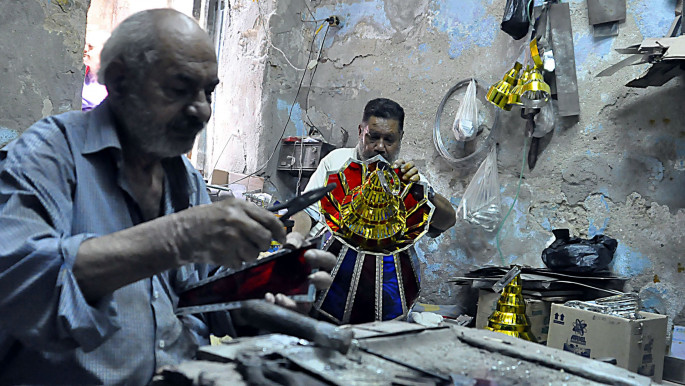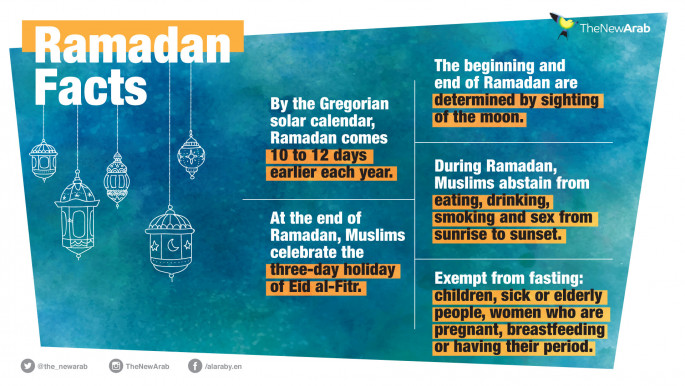Fanoos Ramadan: History of the holy month's iconic lanterns
As Muslim communities prepare to observe Ramadan, which will begin later this week, cities and towns around the world are lighting up for the holiest month in the Islamic calendar.
Colourful decorations, including the iconic Fanoos (lantern), can be seen illuminating the entrances of buildings, houses and shops.
You probably already know that lanterns have been associated with the holy month for centuries, but do you know where they came from?
There have been many versions of the story behind the origin of the Fanoos.
However, most stories agree that it appeared during the Fatimid period, and that it is an entirely Egyptian tradition that spread to other countries in the Arab world.
In 969 AD, according to one story, Egyptian people and children held their lanterns to greet the Fatimid Caliph al-Muizz li-Din Allah as they waited for his arrival in Cairo on the first night of Ramadan.
Pleased with the sight of the beautiful lanterns, the Caliph ordered craftsmen to start making them commercially, and he issued a decree requiring people to hang lanterns on the doors of every shop and house at night, or face a penalty.
 |
| A few dozen workshops remain in Egypt today, making the traditional handcrafted lanterns of brass and tinted glass [Anadolu] |
This led to a boom in the lantern industry, with craftsmen creating new shapes and sizes for the Fanoos.
According to another account, a Fatimid ruler banned women from leaving the house all year, except during Ramadan month, on the condition that their children walk ahead of them, carrying lanterns to light the way and signal the passing of women.
Since then, decorating buildings with lanterns became an annual Ramadan ritual. The image of children holding their colourful Fanoos and singing old Ramadan songs in the streets of Cairo alongside dried fruit carts also became associated with the holy month.
Today, with the advance of technology and electricity, lanterns are no longer used as a source of light, but rather as traditional decoration.
A few dozen workshops remain in Egypt today, making the traditional handcrafted lanterns of brass and tinted glass. However, due to their high cost and limited supply, most people buy cheap plastic lanterns imported from China.
Ramadan month
During Ramadan, Muslims around the world abstain from eating, drinking and smoking from sunrise to sunset.
Children, the elderly, the sick, women who are pregnant, nursing or menstruating, and people who are travelling are exempt from the ban.
Many break their fast as the Prophet Muhammad did around 1,400 years ago, with a sip of water and some dates at sunset followed by prayer.
For Muslims, fasting is not an act of penitence, but a method of self-purification, both physical and spiritual, as well as a way of showing solidarity with the less fortunate. For many believers, it is also an asceticism that brings spiritual elevation and the collective affirmation of faith.
Ramadan is also important in religious terms, because beyond the fast, it is a month during which the Quranic revelation began. It was during the "Night of Destiny" - Laylat al-Qadr - that the Quran began to be communicated to the Prophet.
Fasting during Ramadan is one of the five pillars of Islam, along with the Muslim declaration of faith, daily prayer, charity and performing the hajj pilgrimage in Mecca.
Muslims celebrate the end of Ramadan with a three-day holiday named Eid al-Fitr, the Arabic words for "festival of breaking the fast".
 |
![Ramadan lanterns [Anadolu] Ramadan lanterns [Anadolu]](/sites/default/files/styles/image_345x195/public/media/images/4BEEFFCC-D58A-4B51-BA68-5D32A20040BE.jpg?h=d1cb525d&itok=vfMb99py)


